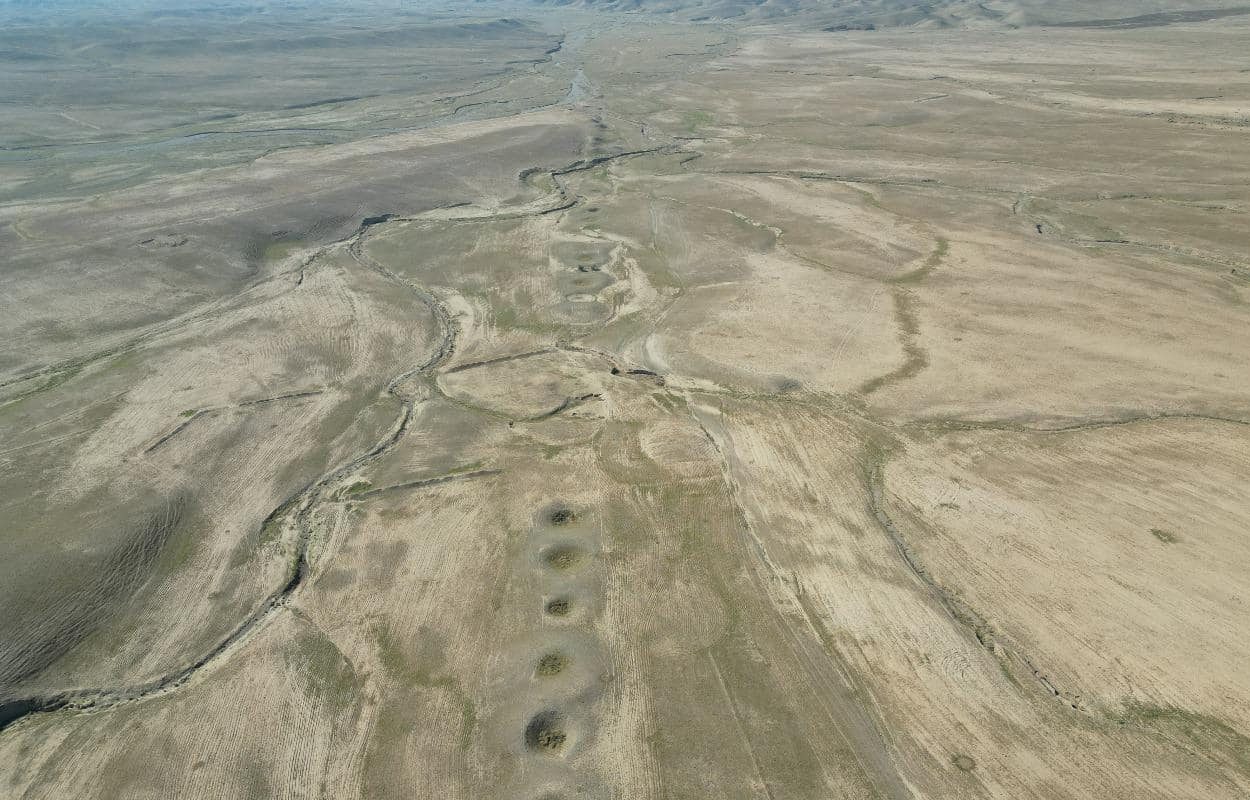An archaeological survey has identified three clusters of ancient qanats in the Diyala Province of Iraq.
A qanat, also known as a kārīz, is a system for transporting water from an aquifer or water well over long distances in hot dry climates without losing water to evaporation.
Qanats use a sequence of vertical shafts resembling wells, linked by a gently inclined tunnel that serves as a conduit for channelling water. Qanats efficiently transport substantial volumes of underground water to the surface without requiring pumps.
The water naturally flows downhill by gravity, with the endpoint positioned at a lower level than the origin. When the qanat is still below ground, the water is drawn to the surface via water wells or animal driven Persian wells.

Some Qanats are divided into an underground network of smaller canals known as kariz, functioning similarly to qanats by staying beneath the surface to prevent contamination and evaporation. In certain instances, water from a qanat is stored in a reservoir, usually with nighttime flow reserved for daytime usage.
The technology for qanat’s first emerged in ancient Iran around 3,000-years-ago and slowly spread westward and eastward.
A recent survey within the Diyala Province has discovered three clusters of qanats stretching between the areas of Jalulaa and Kortaba. Initial studies dates the clusters to around AD 1000, a period known as the “Iranian Intermezzo”, when parts of the region were governed by a number of minor Iranian emirates.
The first cluster consists of 25 wells on a linear alignment connected to an adjacent 10 metre deep water channel. The second cluster also has 25 wells and is connected to a 13 km long hand dug channel, while the third cluster consists of 9 wells connected to water canals dug on both sides.
Header Image Credit : State Board of Antiquities & Heritage







